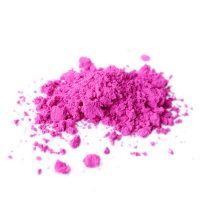What’s All the Fuss About Pink Cocaine?

You don’t have to have a degree in marketing to know that an eye-catching visual appearance can be an excellent marketing tactic. When you think about it, Everlasting Gobstoppers, Sweet Tarts, and Skittles don’t taste like much, but they sure are colorful. Of course, if all you want is something that looks and tastes like candy, all you have to do is scrounge up some change from your pockets and underneath the couch cushions and walk down to the gas station. The folks who pay big money for the drugs that look like candy only shell out that much cash because they know that the product will give them more than just a sugar rush. From the purple viscosity of lean to the black light-ready glow of acid tabs, the eye candy factor is an integral experience of your favorite drugs. If blue sky meth from Breaking Bad were real, journalists would still be knitting their brows about meth instead of branding each newcomer to the drug supply as “deadlier than fentanyl.” These days, the drug-sniffing dogs at Miami International Airport are on high alert about a drug known as pink cocaine, among other names. While pink cocaine may be a sight for sore eyes, it can also get you into a lot of legal trouble. If a police K-9 is sure that you were transporting pink cocaine, when you were engaging in the perfectly legal activity of traveling while in possession of a Kool-Aid packet, contact a Tampa drug crime lawyer.
Pink Cocaine Isn’t Really Cocaine, but It’s Plenty Dangerous
Pink cocaine is an inaccurate nickname; the stuff isn’t naturally pink, and it doesn’t come from the coca plant. In fact, pink cocaine is a synthetic phenethylamine, one of many such drugs synthesized in the 1970s by Alexander Shulgin, in an effort to maneuver through loopholes in the federal Controlled Substances Act. It is also known as 2c or 2C-B because of a pair of carbon atoms that make it chemically different from the many other phenethylamines out there. 2c and 2C-B are the source of the drug’s other nicknames Tussi and Tucibi. The color pink is just to make it look pretty and taste good; the drug gets its pink hue from being mixed with Kool-Aid powder that would yield a red or pink beverage if used in accordance with the instructions on the package.
2c has experienced surges in popularity over the years, usually as a club drug. It was looking fabulous in discos in the 1970s, and in the years before the COVID-19 pandemic shut down the party, it was the prettiest drug in Ibiza. Now the media has started fixating on the presence of 2c in reggae clubs in Florida. Phenethylamines like 2c are central nervous system stimulants, but they also have empathogenic effects, similar to MDMA, which is why they are popular in dance clubs. 2c is a Schedule I controlled substance.
Contact Tampa Criminal Defense Attorney Bryant Scriven
A criminal defense lawyer can help you fight charges of possession of controlled substances. Contact Scriven Law in Tampa, Florida to schedule a consultation.
Sources:
local10.com/news/local/2023/06/28/local-10-news-gets-inside-look-at-new-nightclub-narcotic-sweeping-south-floridas-party-scene/
unodc.org/documents/scientific/Global_SMART_Update_2022_Vol.27.pdf
avenuesrecovery.com/understanding-addiction/cocaine-and-crack-addiction/pink-cocaine/

